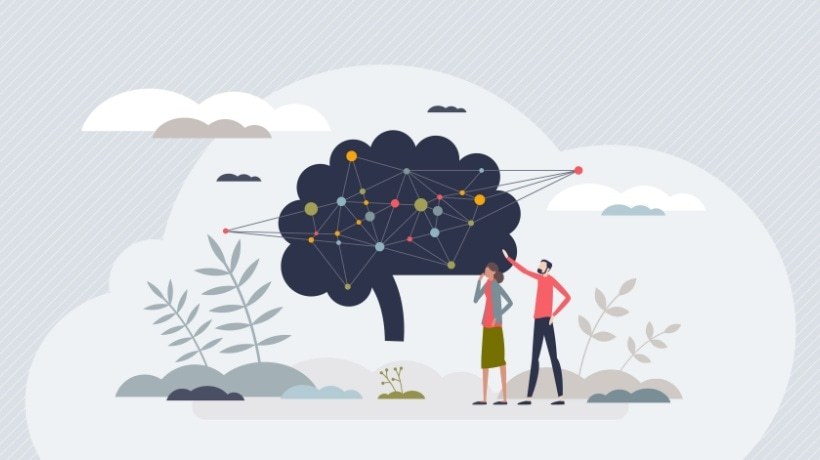What You Need To Know About The Neuroscience Of Storytelling
Understanding how employees learn made my abnormal psychology professor a rebel.
Unlike most professors, she didn’t modularly rehash the course’s textbook on PowerPoint presentations, and she definitely didn’t just read off slides awkwardly, as if a teacher’s assistant had rushed to piece a presentation together a few hours before class.
Given her deep research and clinical background, she instead relayed stories of anonymous patients she’d come across in her therapy room, and she’d weave their progress into the lesson(s) and/or disorders we’d review in class. Her episodic approach was engaging –very Sunday night HBO drama– and years later I can still rattle on about at least a dozen or so psychiatric disorders despite majoring in Philosophy.
It took neurology several centuries to validate what the prehistoric cave painters of Indonesia [1] already knew: Storytelling makes for effective communication. Yet it feels like the more evidence we have that our brains are hardwired for relational and analogical reasoning, the more instructors recite bulleted data points without context, despite the vast amount of resources and technology at our fingertips.
This is especially true if you’re a corporate trainer. With proper planning and free sources like YouTube EDU and TED [2], learners can think of leadership or productivity and look forward to logging into your corporate training program.
This Is Your Brain On Stories
Here’s something I can barely type with my eyes open [3]:
- Broca’s Area vs. Wernicke’s Area.
- Broca: motor speech; Wernicke: sensory speech.
- Broca: frontal lobe; Wernicke: temporal and parietal lobes.
- Broca: speech production; Wernicke: written and spoken language.
Information transmitted this way is not suddenly boring to us because we’re living in a post-Internet world (although it plays a factor). But unless neuro-linguistics is your calling, you’d sleep through a conference session laid out like the bullet points above because you’re only stimulating Broca’s and Wernicke’s areas, meaning you’re only triggering the language processing areas of the brain, where we decode words into meaning. That’s it.
The word ‘stimulation’ [4] may be a buzzword in the corporate learning space, but it also implies a scientific truth. In 2006, the journal NeuroImage published a study by researchers in Spain who asked participants to read words with strong olfactory associations, together with neutral words.
Participants were scanned by an fMRI machine as they observed the Spanish words for “perfume” and “coffee,” for which their primary olfactory cortex lit up. However, the region remained dark when they saw words like “chair” or “key.” A similar study conducted by Emory University researchers successfully roused the sensory cortex with metaphors like “the singer had a velvet voice,” and the motor cortex with others, like “Pablo kicked the ball.”
In processing the meaning of these phrases, subjects engaged both their primary sensory areas and Broca’s and Wernicke’s areas. This confirms that storytelling activates our language processing areas concurrently, thus triggering more parts of your brain.
5 Tips To Successfully Use Digital Storytelling In Your Online Training
Proponents of Reflective Practice [5] have advanced the notion that significant learning is possible when information is used in thoughtful, reflective and formalized ways.
According to Maxine Alterio, who researches formalized storytelling at Otago Polytechnic in New Zealand, storytelling can do more than inform and entertain. Among other things, listening to stories helps learners stimulate critical thinking skills, capture non-linguistic complexities of situations and construct new knowledge.
So how can corporate online educators take advantage of storytelling? Here are a few ideas:
1. Learn More About Your Learners
Develop learner personas that include how and where they’ll engage with your learning content, what they enjoy, etc. Then create narratives around your subject matter that will resonate with them.
Use robust analytics features to ensure you're getting the data you need for your employees.
2. Use A Narrative Structure
Don’t risk sounding like a trend-hopping marketer who likes to call campaigns ‘stories’. Include a beginning/hook where you expose characters, setting, and conflict, detail the rising action where the central conflict emerges, make sure you have a strong climax and wrap up loose ends of the story with a resolution.
Check out - How to Create an Online Course in 5 Easy Steps
3. Learning Is All In The Details
Vivid details make stories pop for learners. Details, particularly when they’re tailored to your audience, make stories resonate and give them credibility.
4. Use The Technology Around You
As a corporate online educator, you have access to beautiful images, emotionally charged videos, a wide-range of sounds and music, informative SlideShare presentations and other world-quality resources. Weave them into your story!
See the - Six Steps to an Effective Customer Onboarding Program
5. Tell Relevant Stories
When the brain perceives data as relevant, cognitive effects increase as efforts decrease. So, in order to make your storied learning content more efficient, line up the story with one or several of your learning objectives.
Is There Such Thing As Bad Storytelling?
In the context of corporate online learning, a bad story is one with little to no pedagogical value. Digital storytelling presents challenges for students and educators, starting with bad storytelling, from which your students wouldn’t at all benefit.
The University of Houston’s Bernard R. Robin suggests perusing sites that house content ready for commercial use, such as the American Memory Collection from the United States Library of Congress and the New York Public Library Picture Collection. If you're looking for a way to learn even more about storytelling, be sure to take Pixar's free online storytelling course [6].
Robin is a proponent of using conventional technologies in creative ways. This can mean more creative presentations on Google Drive in the event that your students don’t have access to the Microsoft Office Suite, and out-of-the-box video editors like Apple’s iMovie to edit videos for your employees.
Be wary of setting the wrong tone or expectations. For instance, the ‘storytelling’ of marketing and business development lore is a misnomer. Thinking in this vein can lead your user to believe they’re engaging with particular content types, only to find, well, perhaps another bulleted list.
Lastly, be deliberate about what your employees should learn through story. Due to their ‘stickiness’, [7] stories are highly effective methods of communicating, which can lead to manipulation if they’re used improperly or too often.
In Storytelling: Bewitching the Modern Mind, Le Monde columnist Christian Salmon argues that stories are moving from being spontaneous cultural practices to methods of manipulation, citing examples from figures like George W. Bush, Steve Jobs, and various business management gurus. We see this manipulative effect with every movie we watch. We may know the story is fake, but that doesn’t stop the unconscious parts of our brains from thinking it's real.
Think of it this way – if you screened The Ring or Paranormal Activity for a captive audience in the early 1890s, you could easily coax them into thinking these were true events. With great power comes great responsibility, or so the saying goes.
Use your storytelling powers wisely, and you’ll watch your employees flourish. Successful consumers of stories love to talk about them, so use your new storytelling skills to create employee ambassadors for your training program and let word spread throughout your organization about how effective your training methods really are!
If you're looking for an effective way to train your employees, look no further than SchoolKeep. Get started today with a free 14-day trial!
Footnotes:
- Indonesian Cave Paintings As Old As Europe's Ancient Art
- TED
- Broca's area vs. Wernicke's area
- Simulation-based learning: Just like the real thing
- What is Reflective Practice?
- Pixar offers free online lessons in storytelling via Khan Academy
- The power of storytelling










